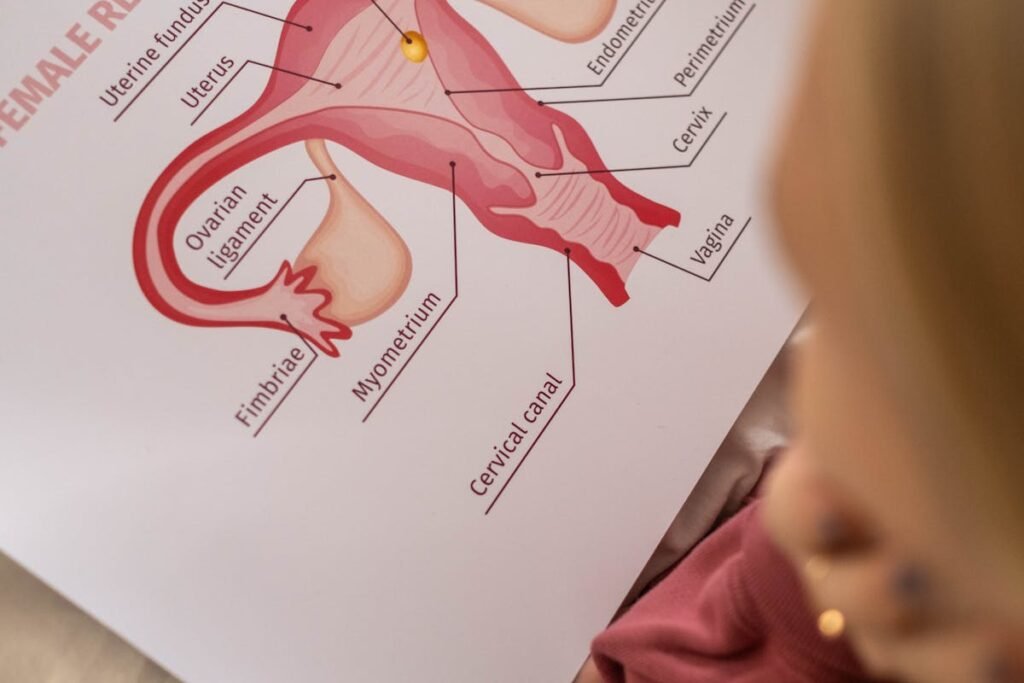A friable cervix refers to a condition where the cervical tissue is unusually delicate and prone to bleeding or irritation. This sensitivity can result from infections, hormonal changes, or underlying medical conditions. Often, a friable cervix may bleed easily during a pelvic exam or sexual intercourse. Though alarming, it is not always a sign of something serious. Still, early diagnosis is vital to rule out serious health concerns like cervical dysplasia or cancer.
Understanding the Anatomy of the Cervix
The cervix is the lower, narrow part of the uterus that opens into the vagina. It plays an essential role in menstruation, pregnancy, and childbirth. Normally, the cervix is firm and smooth. When it’s friable, it becomes softer and more fragile, often accompanied by inflammation, redness, or slight swelling.
Common Symptoms Associated with Friable Cervix
The most common indicator is unexpected bleeding, especially after intercourse or pelvic exams. Other signs include:
-
Vaginal discharge with unusual color or odor
-
Pelvic discomfort
-
Spotting between periods
-
Itching or burning sensations
However, some women might not show any symptoms at all, making routine gynecological visits even more important.
Friable Cervix Causes You Should Know
Several factors can lead to a friable cervix. They include:
-
Sexually Transmitted Infections (STIs): Chlamydia, gonorrhea, or HPV can inflame cervical tissues.
-
Cervicitis: An inflammation of the cervix due to infection or trauma.
-
Hormonal fluctuations: Particularly during pregnancy or menopause.
-
Polyps or cervical ectropion: Benign growths or the presence of glandular cells on the outer cervix.
-
Chemical irritants: Douching or using certain vaginal hygiene products.
How Is a Friable Cervix Diagnosed?
A thorough gynecological examination is the first step. A doctor may use a speculum to view the cervix and assess any bleeding, redness, or discharge. In most cases, additional tests are needed:
-
Pap smear: Screens for abnormal cells.
-
HPV test: Checks for high-risk strains.
-
Colposcopy: A detailed visual inspection of the cervix.
-
Biopsy: A small tissue sample to check for precancerous or cancerous cells.
Is Friable Cervix During Pregnancy Normal?
Yes, it can be. Hormonal changes during pregnancy increase blood flow to the cervix, making it more sensitive. While spotting may occur, it is usually harmless. Nonetheless, it should always be reported to a healthcare provider to rule out complications such as placental issues or infections.
Complications Associated With a Friable Cervix
Left untreated, underlying causes like infections can spread to the uterus or fallopian tubes, leading to pelvic inflammatory disease (PID). This can affect fertility and increase the risk of ectopic pregnancies. Rarely, persistent friability may hint at cervical cancer or severe dysplasia.
Can You Have Sex With a Friable Cervix?
You can, but with caution. Intercourse might cause discomfort or light bleeding. Using lubricants, engaging in gentle activity, and discussing options with your partner and doctor can help make intimacy safer and more comfortable.
Treatment Options for Friable Cervix
Treatments depend on the cause:
-
Antibiotics: For bacterial infections or STIs.
-
Antivirals: In case of viral infections like HPV or herpes.
-
Cryotherapy or cauterization: To remove or treat affected tissue.
-
Hormone therapy: Especially during menopause or postpartum.
It’s crucial to avoid self-diagnosing and stick to prescribed medical regimens.
Home Remedies to Support Cervical Health
While not substitutes for medical care, some natural remedies may support healing:
-
Probiotics: Promote vaginal flora balance.
-
Anti-inflammatory diet: Rich in fruits, vegetables, and omega-3s.
-
Avoid irritants: Ditch scented tampons or douches.
-
Proper hygiene: But not over-cleansing, which disrupts natural flora.
Prevention Tips for a Healthy Cervix
Maintaining cervical health involves both lifestyle and medical measures:
-
Schedule regular gynecological check-ups.
-
Get vaccinated for HPV.
-
Use protection during sex.
-
Practice good hygiene habits.
-
Avoid smoking and excessive alcohol.
Cervical Ectropion and Friability: Are They the Same?
Not quite. Cervical ectropion occurs when glandular cells that usually reside inside the cervical canal extend to the outer surface. This can make the cervix appear red and more prone to bleeding. While ectropion often causes a friable cervix, it’s a distinct condition and not always problematic.
Emotional Impact of Living With Friable Cervix
Experiencing unusual bleeding or persistent discomfort can be distressing. Many women feel anxious, especially when symptoms appear during intimacy. Open communication with a partner and professional support can ease emotional stress.
How Hormones Influence Cervical Tissue
Estrogen plays a major role in cervical elasticity and blood flow. Fluctuations during puberty, pregnancy, or menopause can alter tissue integrity, sometimes causing friability. Hormonal imbalances due to birth control or thyroid disorders may also be culprits.
When to Seek Emergency Medical Attention
If you experience severe bleeding, intense pelvic pain, fever, or foul-smelling discharge, seek immediate medical care. These could indicate infections, miscarriage, or other gynecological emergencies.
Does Birth Control Affect Cervical Friability?
Some hormonal contraceptives may cause cervical changes. While most are mild, they can increase cervical ectropion, which may result in a friable cervix. Switching methods or adjusting dosage often resolves the issue.
Role of Pap Smears in Detecting Friable Cervix
While a Pap smear doesn’t diagnose friability directly, it helps detect abnormalities that might cause it. It’s one of the best tools to monitor cervical health and catch issues early.
Friable Cervix and HPV Connection
Human Papillomavirus (HPV) is a significant contributor to cervical changes. High-risk strains can lead to cellular abnormalities and a friable cervix. Regular screenings and HPV vaccination can reduce long-term risks.
Lifestyle Changes That Improve Cervical Health
Small lifestyle adjustments can make a big difference:
-
Eat more antioxidant-rich foods.
-
Drink plenty of water.
-
Practice safe sex.
-
Reduce stress through yoga or mindfulness.
Friable Cervix in Menopausal Women
Declining estrogen levels during menopause can thin and dry cervical tissues, making them fragile. Hormone replacement therapy (HRT) and vaginal moisturizers can provide relief.
Can a Friable Cervix Be Prevented?
In many cases, yes. Routine checkups, safe sexual practices, and good hygiene reduce risks. Staying informed and proactive is key to early detection and prevention.
Does A Friable Cervix Indicate Cancer?
Not always. Most cases stem from benign causes. However, persistent or severe symptoms warrant further tests to rule out cancer or precancerous changes.
Friable Cervix
Having a friable cervix doesn’t mean something is terribly wrong. Often, it’s a sign your body needs attention. Whether it’s hormonal shifts or a treatable infection, timely care and regular screenings can ensure better outcomes.
Also read: Glucosamax: The Ultimate Joint Support for Active Living
FAQs
Can a friable cervix heal on its own?
In some cases, especially if caused by hormonal changes or minor irritation, it can resolve without treatment.
Is bleeding after sex always a sign of a friable cervix?
Not necessarily. It can be due to infections, polyps, or hormonal imbalances too. Always consult a doctor for accurate diagnosis.
How long does treatment for friable cervix take?
It depends on the underlying cause. Infections may clear up in a week, while chronic issues may take longer.
Can I use tampons with a friable cervix?
It’s best to avoid them if they cause irritation or bleeding. Use pads or consult your gynecologist for alternatives.
Are teenagers prone to friable cervix?
Yes, especially during puberty when hormones fluctuate. Regular health checks help monitor these changes.
Should I avoid intercourse if diagnosed with a friable cervix?
Gentle intercourse is usually fine, but it’s wise to consult your doctor and use adequate lubrication.
Conclusion
A friable cervix is a condition that, while concerning, is often manageable with proper care and awareness. Whether caused by infection, hormonal imbalance, or other factors, the key lies in early diagnosis and effective treatment. Understanding your body, staying proactive with your health, and maintaining open dialogue with your healthcare provider can help you navigate this condition confidently.


